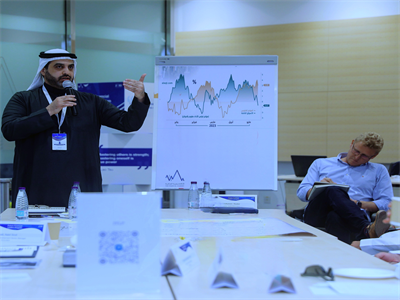Program Brief
The Diploma in Insurance is a technical and supervisory qualification for insurance staff working across all sectors of the industry, and the logical progression from the Certificate in Insurance. The Diploma will provide you with a firm understanding of insurance fundamentals and will enable you to build towards advanced technical knowledge, thereby ensuring you have the means to function effectively in a challenging environment. Underwriting Practice (M80) unit counts towards a Diploma in Insurance, it may also count towards the Advanced Diploma in Insurance. Through this training program, participants will understand the principles and practices of underwriting and the environment within which they operate.
Program Goals
At the end of the training program, the participant should be able to:
- Understand key influences of the regulatory and commercial environment on underwriting.
- Understand key aspects of underwriting policy and practice.
- Understand how statistical data is used for underwriting.
- Understand the principles and practices of risk pricing.
- Understand risk exposure and control.
Jadarat
Program Agenda
Module 1: Key Influences of the Regulatory and Commercial Environment on Underwriting
1 Implications of regulatory authorization for the underwriting function
2 Relationship between underwriting and capital and solvency requirements
3 Principles and requirements of contract certainty
4 Impact of legislation and litigation on underwriting
5 Operation of the traditional underwriting cycle
6 Impact of major events and trends on underwriting
7 Importance of the fair treatment of customers and providing positive customer outcomes
Module 2: Key Aspects of Underwriting Policy and Practice
1 Corporate underwriting strategy and its influences on underwriting policy
2 Importance of moral and physical hazards in setting an underwriting policy
3 Typical criteria for policy cover, terms, conditions and restrictions
4 How risks are classified, categorized and improved
5 Interaction between underwriting and distribution channels
6 Use and implications of granting delegated authority
7 Methods of entering international markets and the implications of writing international business
8 Counter-fraud initiatives
9 Effect of mergers and acquisitions on underwriting policy and practice
Module 3: How Statistical Data is Used for Underwriting
1 Relationship between exposure and claims
2 Importance of averages and how they are calculated
3 Interpret the distribution of data around the average
4 Relationship between frequency and severity
5 Basic principles of probability and how it can be used to calculate expected future claims
6 Importance of the law of large numbers in sample sizes
7 Limitations of statistical data
Module 4: Principles and Practices of Risk Pricing
1 Main elements of the premium.
2 Burning cost and prospective risk analysis methods of rating
3 How claims data is interpreted and used in setting prices
4 Significance of incurred but not reported (IBNR) claims
5 Importance of liaison between underwriting and claims functions, especially reserving.
6 Role and significance of the actuary in risk pricing.
7 Importance of competitor analysis in pricing
8 Discuss other risk data that can be used in pricing
Module 5: Risk Exposure and Control
1 How exposure to single risks and single events can be measured and managed to balance the account.
2 Aggregation of risks and the use of catastrophe modeling
3 Role of reinsurance in controlling exposure
4 Role and main types of reinsurance.
5 Importance of the interaction between insurer and reinsurer
6 Outline methods other than reinsurance that can be used for limiting exposure
Program Requirements
Pass the Professional Exam in Insurance Foundations
Pass the Professional Exam in Insurance Foundations
Pass the Certificate Exam in Insurance, Legal and Regulatory (IF1)
Pass the Certificate Exam in Insurance, Legal and Regulatory (IF1)
Program Path
Names of the training programs that are integrated (enriched) with the training program:
- Not Available
Names of the training programs that after the training program:
Program Method
- Lecture
- Case Studies
- Brainstroming
- Practical Implementation
- Dialogue Teams
- Exercises and assignments
Evaluation Method
- Pre Exam
- Post Exam
- Simulation Test for professional exam
Training Type
- In Class Training
- Online Training















Add Comment